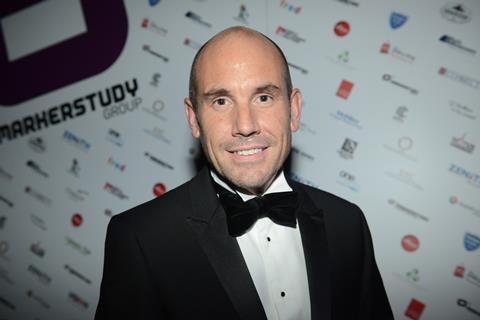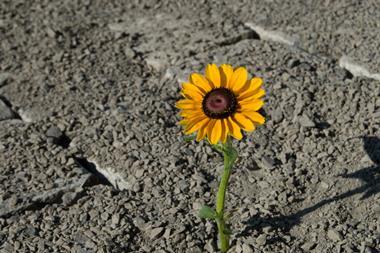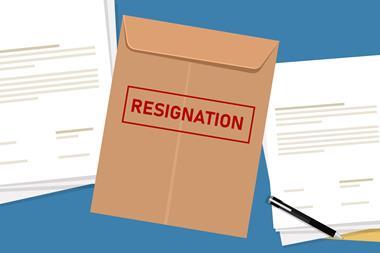Brigitte Bouquot warns that businesses have to invest in potential risks in order to retaliate against economic shocks
Brigitte Bouquot, president at the Association for the Management of Risks and Business Insurance (Amrae), warned delegates attending Amrae’s annual Rencontres event that risk management needs to shift from a qualitative approach to a more quantitative stance in order to effectively cushion businesses from economic and political shocks.
Speaking in Deauville, France, Bouquot pinpointed technology as the key to this strategic shift, calling on the industry to look at Big Data for potential solutions.
In her opening keynote to on Wednesday 5 February, she said: “Risk is at the very heart of each business.
“Today, businesses don’t merely have large industrial risks, [such as] chemical, nuclear. On top of that, they pile up digital risk [and] cyber security vulnerabilities.
“Across the world, businesses are facing a paradoxical turning point, forced to choose between short-term profit for investors, and long-term durability for consumers. This makes for a difficult negotiation between cutting budgets for competitive cost-reduction and investing in an effective prevention policy.
“To avoid disaster, businesses must stand up and face potential risk. It’s high time to shift from qualitative risk management to quantitative risk management. Businesses have to measure the cost of risk in order to allocate sufficient resources, invest a portion of their income into prevention and allocate capital to prepare for shocks. The technology is here to help them do this.
“If they establish this as their market standard, then the market will make these investments with the support of rating agencies and consumers. If not, they will continue to be subject to economic shocks—carbon or cyber—and volatile risk premiums.
“Businesses have a more intimate knowledge of their own risks than insurers do. If businesses engage in more risk management and allocates greater resources to it, with the capital of their captive insurers as well, then we would set in motion a virtuous circle of confidence in the market —the market we believe in and which is the key to our economy’s resilience.”
The ‘insurance divide’
This strategy, calling upon businesses to allocate capital towards resilience, is one that the insurance sector supports, added Bouquot. “To share risk financially, to mutualise it, makes us stronger,” she explained. “That’s why the insurance market has allied itself with this strategy.”
Despite this, Bouquot noted a worrying “insurance divide”.
She continued: “What preoccupies me is the fact that the ‘insurance divide’ is worsening, that insurers are becoming too cautious, whereas catastrophic scenarios cannot be withstood without insurance.
“Yes, negative rates have placed increased pressure on the technical profits of insurers, who are also under pressure from regulators and investors.
“But it always surprises me that pricing models are still created upon projections of the past, as if blind to the future, even as mathematical risk-profiles are evolving at full speed.
“Potential risk itself derives from the insurance model.”
A political landscape
For Bouquot, 2020 will have a vastly political backdrop, following hot on the heels of 2019’s “brutal market downturn”. It is this thinking that led to AMRAE setting the 28th Rencontres event theme as ‘potential risks’.
“Political powers are disrupting our models,” Bouquot said. “State powers are disrupting our models. Businesses have to understand this.”
She continued: “For businesses, political risk has reached a new order of magnitude: the calling into question of the global model in which they operate and thrive.
“Political risk calls into question our developed models, threatens global business and democracy. Political risk does this at the very moment when we had based our future calculations upon the presumed continuity of those same things.
“We know that the greatest risks have now become planet-wide: operational risks— climate, cyber, and health risks— have become as systemic as financial risk.
“These risks are correlated, volatile. And to top it all, risks have crept into unknown areas, like negative rates, and irreversible crises, like the climate.
“Will businesses and nations find these risks to be sustainable, and insurable?”
Tackling potential risks
Bouquot explained that there are three key axis that support the potential risk model. This includes a focus around nature and the environment, considering technology and the ability to control progress to ensure that technology can be embedded into an ethical narrative, and addressing an industry-wide crisis in confidence.
Bouquot linked this last strand to the notion of a social contract. She explained: “Last July, the ‘Cercles des Économistes’ offered a definition that struck me: ‘Confidence is the assumed risk of relying on another person, or other persons, in view of a cooperation repeated over time and founded upon a common perception of mutual interest.’ To define confidence as the acceptance of potential risk puts risk squarely at the heart of the social contract that links citizen to nation.
“Such a definition also places risk at the heart of the many social contracts that link us together on all levels.”
For Bouquot, risk management has, therefore, never played a more central role.
“Risk management has become essential and our responsibilities — the duties of our profession —are now decisive,” she concluded.












































No comments yet